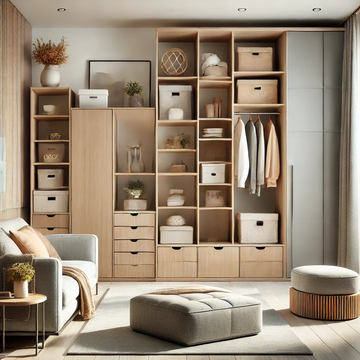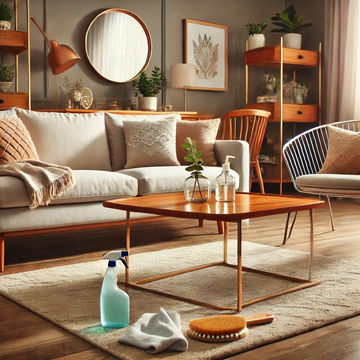Why the Right Canvas Matters
Ever felt frustrated when your artwork doesn’t turn out as you imagined? I’ve been there too. The right canvas can make all the difference between a masterpiece and a frustrating experience. Choosing the right canvas isn’t just about picking a surface; it’s about setting yourself up for success. Think of it like choosing the right pair of shoes for a marathon—you wouldn’t go running in flip-flops, right?
That’s why we’re here to help you navigate through the canvas options available. From different types of canvases to textures and weights, we’ll cover everything you need to ensure your artwork looks just as you’ve envisioned it. Ready to dive in?
Step 1: Understand Your Canvas Options
Stretched Canvas
Stretched canvas is a classic choice for many artists. It comes pre-stretched and mounted on a wooden frame, so it’s ready to use straight away. This type is convenient and saves time, making it perfect for acrylics, oils, and mixed media. Just imagine the ease of jumping straight into your art without needing to prepare the surface first!
Canvas Boards
Canvas boards are another option, featuring canvas mounted on a rigid board. They’re less expensive and highly portable, which makes them a great choice if you’re on the go or need to create quick studies. They’re like the trusty sidekick of the art world—always there when you need them but less demanding on your wallet.
Canvas Panels
Canvas panels are similar to boards but offer a bit more flexibility. They’re lightweight and easy to frame, which is fantastic for detailed work or smaller pieces. If you’ve ever tried to transport a large, stretched canvas and wished for something more manageable, canvas panels might just be your solution.
Step 2: Choosing the Right Canvas Texture
Smooth (Hot Pressed)
If you’re aiming for a surface as smooth as silk, hot-pressed canvas is your go-to. It’s perfect for fine detail work, like those intricate watercolour paintings where every brushstroke counts. It’s like writing with a fine-tipped pen on a pristine sheet of paper—everything just flows better.
Medium (Cold Pressed)
Cold-pressed canvas has a bit more texture but is still versatile enough for various techniques. It’s great for acrylics and oils and works well if you’re mixing up your style. Think of it as the all-rounder—suitable for a range of techniques and finishes.
Rough
For those who love a bit of texture in their work, rough canvas adds a dynamic quality to your art. It’s fantastic for impasto techniques where you want the paint to stand out and add some dimension. If you’ve ever admired a painting with a lot of texture and wondered how it was achieved, rough canvas could be the secret.
Step 3: Canvas Weight and Thickness
Lightweight (4-8 oz)
Lightweight canvases are thin and flexible, making them a good choice for smaller works or quick studies. They’re affordable and easy to handle—perfect if you’re experimenting or on a budget.
Medium Weight (8-12 oz)
This is the most common type of canvas and strikes a good balance between durability and cost. It’s suitable for general painting and can handle a variety of techniques without breaking the bank.
Heavyweight (12-24 oz)
Heavyweight canvases are robust and can handle heavy paint applications. They’re ideal for large-scale works or when you want to go all out with your paint. If you’re planning something grand and bold, this is your canvas.
Step 4: Canvas Preparation and Priming
Pre-Gessoed Canvas
Pre-gessoed canvases come ready to use, which is a huge time-saver. They’re primed with gesso, so you can start painting right away. It’s like getting a pre-made meal—just add your artistic flair.
Unprimed Canvas
Unprimed canvas gives you the freedom to prepare the surface exactly how you want it. If you’re looking for a custom texture or absorbency, this option allows for a more personal touch. It’s like baking from scratch—you get to control every aspect of the process.
Step 5: Factors to Consider When Choosing a Canvas
Art Medium
Different art mediums work better on different canvases. For instance, watercolours need a smooth surface, while oils and acrylics can handle a bit more texture. Think about what you’re using and match your canvas accordingly.
Art Style
Your artistic style will also influence your canvas choice. Realistic styles might benefit from a smoother surface, while abstract or expressive works could thrive on more texture. It’s about finding a canvas that complements your style.
Budget
Balancing quality and cost is key. There’s no need to splurge on expensive canvases if you’re just starting out, but investing in good quality will pay off in the long run.
Size and Format
Consider the size of your project and the format you need. Larger canvases are great for big, bold works, while smaller ones are perfect for detailed pieces or studies.
Step 6: Personal Preferences and Practical Tips
Experimentation
Don’t be afraid to try different canvases and see what works best for you. Every artist has their own preference, and sometimes the only way to find yours is through a bit of trial and error.
Local Art Supply Stores
Visiting local stores allows you to feel and test the canvases in person. It’s like getting a sense of how a new pair of shoes fits before buying them.
Reviews and Recommendations
Check out reviews and ask fellow artists for recommendations. Their experiences can guide you to the right choice and help you avoid common pitfalls.
Ready to Pick Your Canvas?
Choosing the right canvas is a big step in creating art that truly shines. Whether you’re just starting out or you’re a seasoned pro, taking the time to select the perfect surface will enhance your creative process. So, roll up your sleeves, pick your canvas, and get ready to bring your artistic vision to life. Happy painting!




